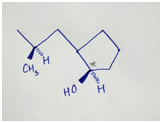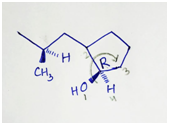Classes Of Functional Groups
Organic Chemistry deals mostly with carbon and hydrogens, also called hydrocarbons, but those groups which replace hydrogen and bonds with carbon to give a characteristic nature, unique of their own, to the hydrocarbon they are attached to, are called functional groups. All the compounds belonging to a functional group undergo reactions in a similar pattern and are known to have similar physical and chemical properties.
Characteristics Of Functional Groups
In organic chemistry, we encounter a number of special substituent groups which are attached to the hydrocarbon backbone. These groups impart certain characteristics to the molecule of which it is a part of and thus, become the highlight of that particular molecule.
IUPAC Nomenclature
In Chemistry, IUPAC stands for International Union of Pure and Applied Chemistry which suggested a systematic naming approach for the organic and inorganic compounds, as in the beginning stage of nomenclature one single chemical compound was named in many ways by which lead to confusion. The need for this approach aroused as the number of chemical compounds newly discovered were increasing (approximately 32 million compounds) and the basic concept of nomenclature i.e. the trivial nomenclature and the derived system of nomenclature failed to overcome the challenge. It is an important task to name a chemical compound systematically and unambiguously which reduces lots of confusion about the newly reported compounds.
Answer each question using the ball-and-stick model of compound A.
Give the IUPAC name for A, including R,S designations for stereogenic
centers.
Classify A as a 1°, 2°, or 3° alcohol

Black balls represent ‘C’ atoms, white ball represent ‘H’ atoms and red ball represent ‘O’ atom.
The 2-D structure of the given compound is:

The stereogenic centre in the given compound is as sown below (marked by *):


Since the direction of rotation is clockwise and the least priority group is at dash position, therefore the stereochemistry of the stereogenic centre is R.
IUPAC name of the given compound is (R)-2-isobutyl cyclopentanol or (R)-2-(2-methylpropyl) cyclopentanol.
Step by step
Solved in 2 steps with 3 images









